In Spain one of the most popular foods is Spanish ham. It´s used for celebrations, weddings and birthday dinners. Yet it is also a day to day ingredient in soups, stew and other recipes. Sometimes it seems to be in all the traditional dishes. In summertime it´s even used to top the cold tomato soup, salmorejo. Part of the Mediterranean diet, cured ham is eaten in Portugal, Italy as well as Spain.
However not all ham is the same. There are many different qualities of jamón in Spain and several regions of production. The most well-known areas are in Andalusia and Extremadura. Let´s take a closer look at this Spanish staple.
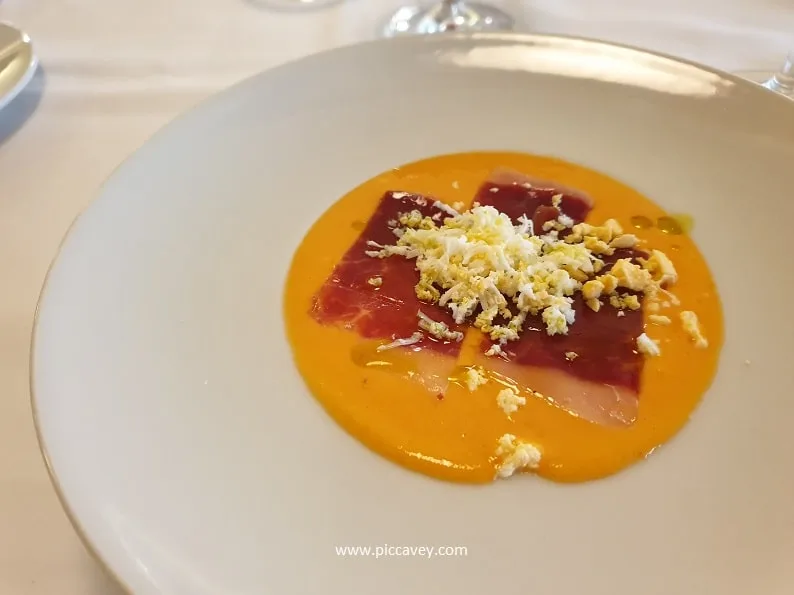
About Spanish Ham
In the UK, boiled ham is the most common. Parma ham, Prosciutto and Iberian ham are quite different in texture and taste to British or American ham. Jamón iberico is cured in salt and hung in storehouses with low humidity. It takes many months to cure and is not cooked or baked in anyway at all.
The name Jamón Iberico takes its name from the Iberian pig and is the most prestigious ham in Spain. The Black Iberian pig breed evolved from the prehistoric wild boar according to recent findings in Doñana. This new discovery from January 2021 of the Suidichnus galani igen. and isp. nov. links this breed to a 300 kg boar. Which once roamed alongside Neanderthals some 106,000 years ago.
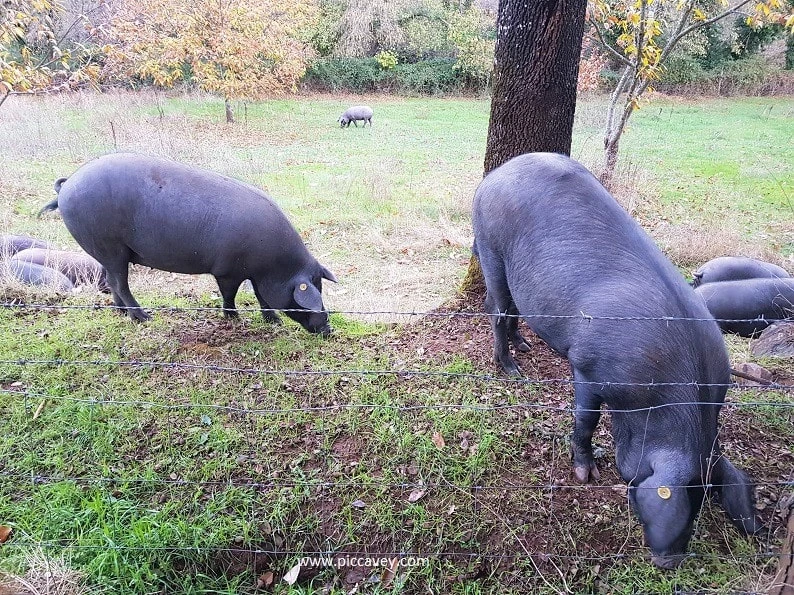
Iberian Black Pigs
One of the most typical characteristics of Iberian hams is their black hoof. Called Pata Negra in Spanish, this term in Spanish also means quality. You can refer to other items as pata negra meaning of the best quality. You may see a leg of ham being carved at a Spanish wedding or inside a restaurant. If the ham is a premium variety you can look at the hoof, to see if it is black or not.
Jamón Iberico refers to the breed of the pig but also the way it is produced too. In the photo above you can see Black pigs grazing in Jabugo on the Cinco Jotas land in Huelva.
Specific regions of Spanish ham production are:
- D.O.P Dehesa de Extremadura
- Denominacíon de Origen Protegido Guijuelo
- D.O.P Jabugo (Huelva)
- Denominacíon de Origen Protegido Los Pedroches
- D.O.P Teruel
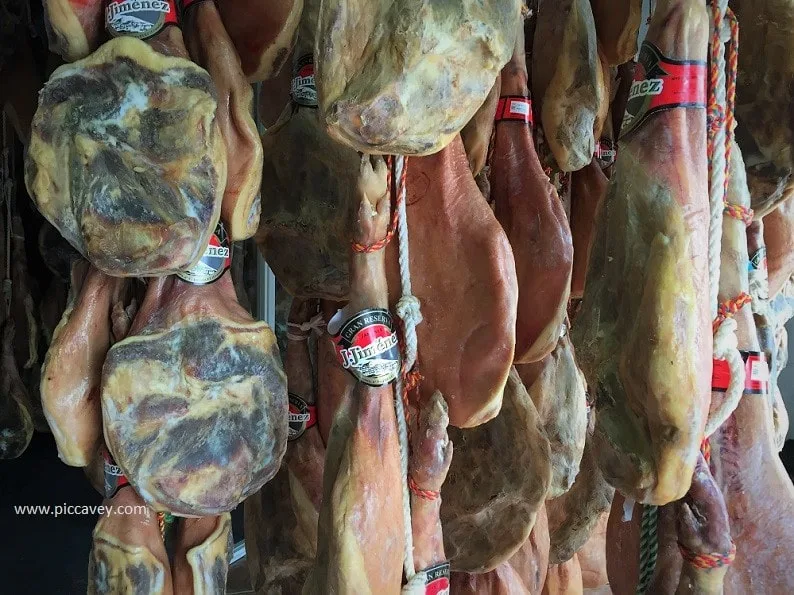
Jamón Serrano
There are other Spanish ham producing areas, although these use other breeds such as Duroc.
- Indicación geográfica protegida Trevélez (Granada)
- I.G.P. Seron (Almeria)
- Lacón Gallego (Galicia)
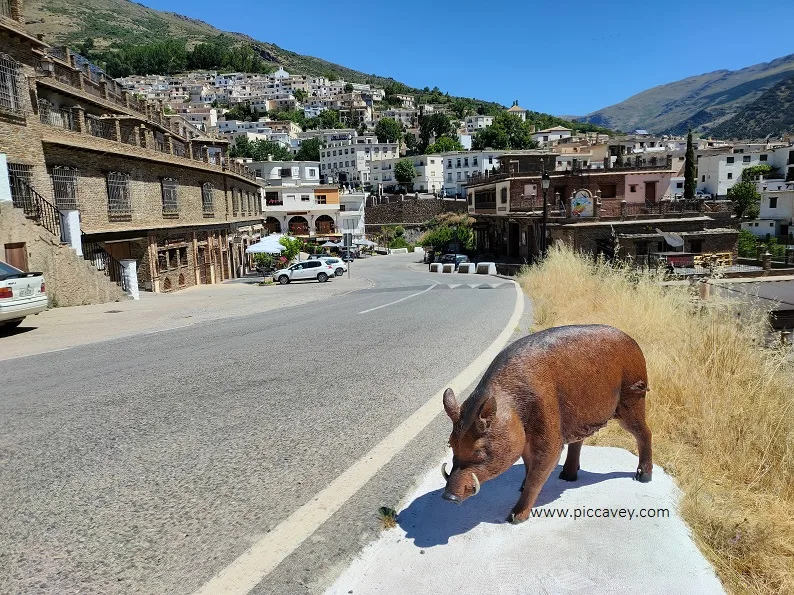
IGP Trevelez
In Granada, Jamón Serrano is commonly used. This ham from Trevélez was even recognised by the Spanish Queen Isabella II in 1862. Since then has a royal seal stamped onto each ham. Serrano ham from the Alpujarra region is made from white pig breeds and it is cured in the Sierra Nevada mountain villages. The pigs are cereal or grain fed.
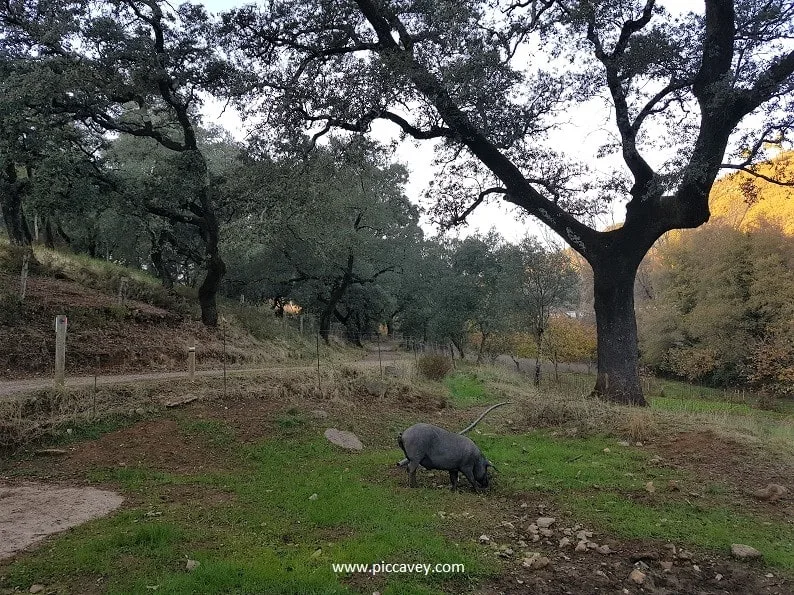
Acorn Fed Pigs
The best quality ham is made from Iberian breed pigs which have been acorn fed. (Acorns in Spanish are Bellotas). The large expanses of Dehesa land has plenty of Oak trees for acorns. A natural feed for these pigs. Holm Oaks, Gall Oaks and Cork Oak trees all have slightly different seasons which overlap. Their acorns have slightly different tastes, some are more bitter, others sweeter. The first ones that come into season are from the Portuguese Oak and are sweeter than the cork tree oaks for example.
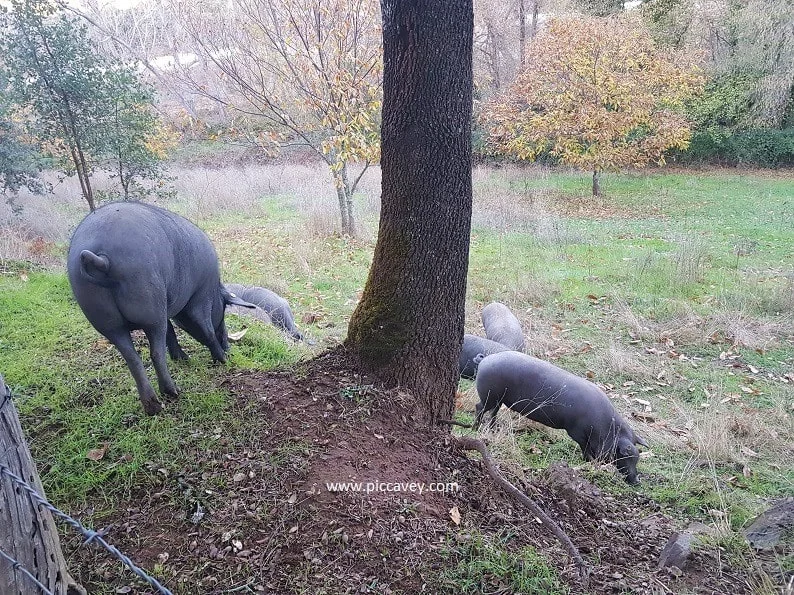
Montanera
The time that pigs can graze for acorns is very specific. The Montanera season in Spain is from October to March. These last months of the pigs life are key to the flavour of the ham. The exercise, concentration of acorns and natural food in their diet increases the quality of the product.

Both the colour of the meat and nutrients are directly linked to the acorn feed. The entire process is what makes this product so unique. The sheer amount of walking that the pig does when it is grazing, creates muscle, making those hind legs better for hams. This exercise also reduces the amount of fat in the legs. It´s thought that they cover around 12 kilometres each day. They also eat other natural things such as roots, mushrooms, grass and plants. Each day each pig consumes 12 kilos of food in the Montanera season.
There are even differences between years (similar to wine). Some years are much better for the Montanera than others. For example 2013 and 2014 were particularly good years. This varies depending on the weather, extremely hot days in September and October aren´t good for the Montanera. The amount of acorns available and which types of oaks have more acorns are factors which affect the season too.
You will notice that a finely sliced jamón iberico has a juicy texture. The meat has an intense burgandy colour. These premium hams are generally cured for over 40 months. The price of just 100 grams of acorn fed Spanish ham can be around 18 euros.
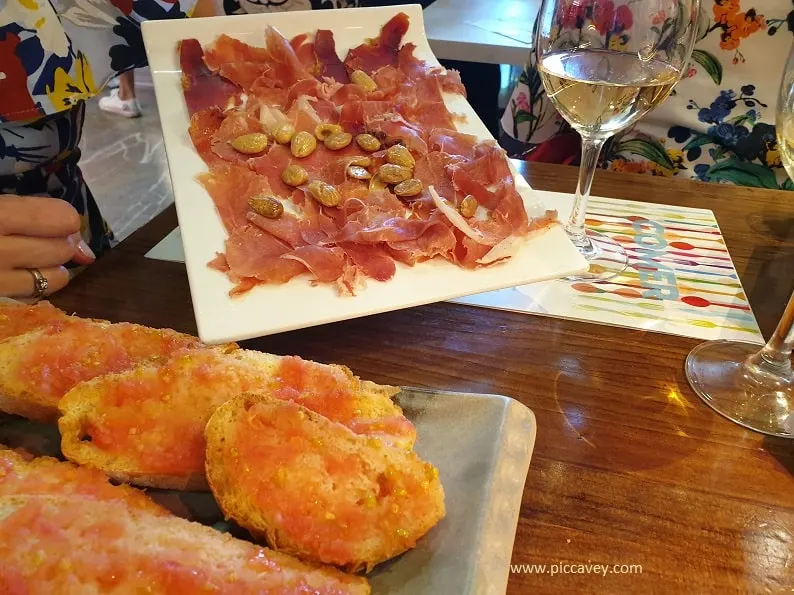
Spanish Ham – Look for
The main things that affect the price and quality of Spanish ham are:
- Breed of pig – Iberian Black Pig, Duroc, Large White or Landrance.
- Time of Curing – This can be from 24 months which is the minimum time required or over 40 months for premium hams.
- Feed – Acorn fed, partially fed on acorn, grain fed, pellet fed. The difference in feed affects the quality of the meat.
- Region or Brand – Where the pig has been raised and who produced the ham, did the curing process.
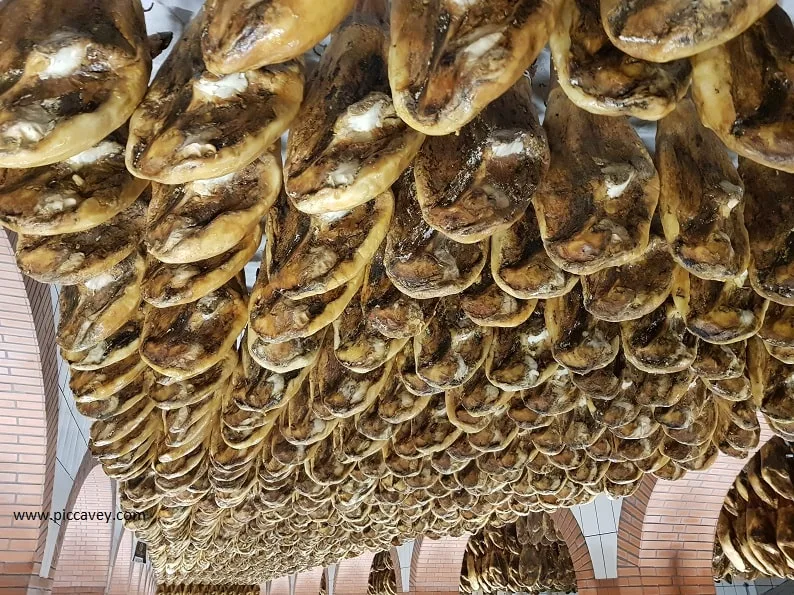
In an effort to regulate this sector in 2014 the Spanish government introduced new labelling system. To prevent fraud and overpricing. There are four main labels to look for in Iberian ham varieties.
Spanish Ham Labels
- Black label is for Acorn fed 100% Iberian breed pigs – Jamón Iberico de Bellota 100%
- Red label is for Acorn fed cross bred pigs – Jamón Iberico de Bellota
- Green Label – Iberian pigs free to roam. Grain fed. (no acorns) –Jamón Iberico de Cebo de Campo
- White Label – Iberian pigs which are grain fed but are kept in pens (no acorns) – Jamón Iberico de Cebo
The actual life of the animal makes a difference to the quality of the ham. (just like free range eggs). The antioxidants from in acorn fed hams remain present in sliced ham. Acorns have a similar DNA to olive oil, the beneficial properties such as Omega 3 and antioxidants are similar. It´s a premium meat product with qualities which may help reduce cholesterol.
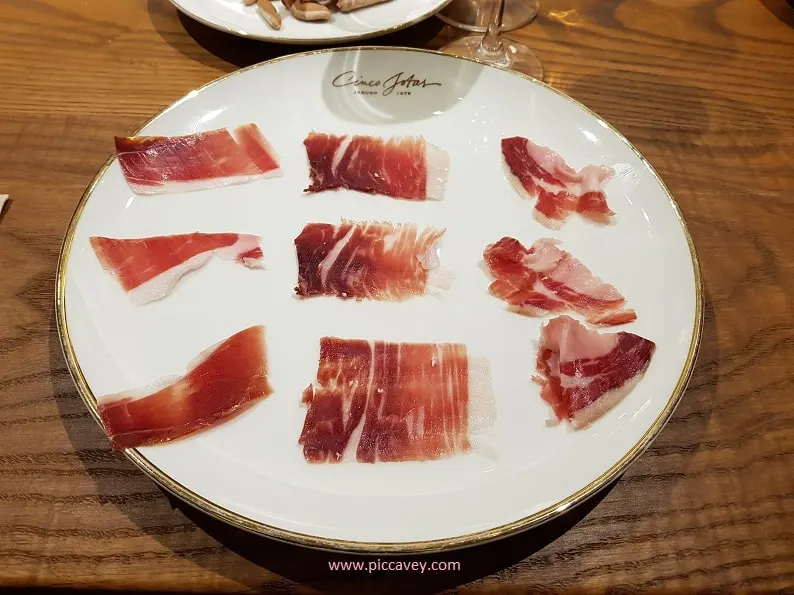
The Ham Museum
On a visit to Aracena in Huelva province, I visited el Museo del Jamón. (seen below). Inside this building I found out more about Spanish ham, but also details about ham in France, Italy, Portugal and beyond. The exhibits explain the different names and methods used.
I also learnt about the rarer pig breed the cerdo ibérico manchado de Jabugo. This spotted Iberian pig breed is specific to the Jabugo area in Huelva and is being reintroduced. This type of pig suffered in 1950´s due to disease and was almost extinct. Now its the most expensive ham in the world. Costing over 4000 euros for a leg of this ham. (compared to a good quality Acorn Fed Iberian Ham costing around 400 euros) In 2014 there were only 50 farmers who owned pigs of this rare spotted breed. All in the Aracena area, Northern part of Huelva province.
At the ham museum, most of the information panels and details are in Spanish language only.
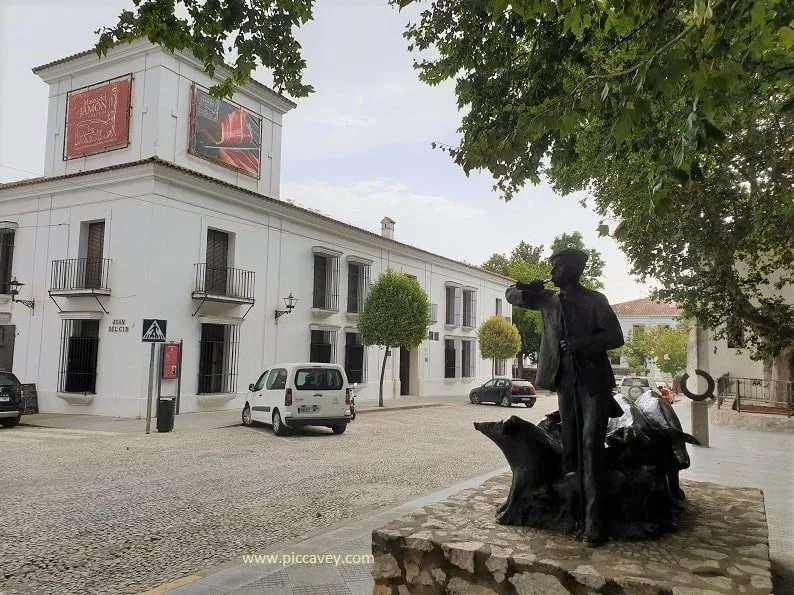
The Importance of Slicing Jamón
In Spain, a Ham Slicer, or Ham Cutter is a profession. Known as Cortador de Jamón, this person selects Spanish ham and Iberian products. They also take care of the preparation of them. If you take a high quality Iberian Ham and use a machine to slice it, the taste is altered. It creates heat as the blade cuts through and affects the delicate taste.
Hand cutting ham is a Spanish tradition that goes that bit further to making a premium product even better. These Cortadores de Jamón also known their way around a ham leg. So they ensure to get the maximum amount of meat off each leg, giving their clients extra value for money. Some Spanish homes have their own hand stand like the one shown below.
Difference between Spanish Ham and Prosciutto
Italian ham, Parma ham or Prosciutto are often compared to Iberian ham. Indeed the curing process and methods are very similar. Spanish ham comes from a specific breed of pig and are usually cured for longer. So the end product is less moist and very flavourful.
Italian Prosciutto is made with a wide range of pig or wild boar breeds. (similar to Serrano ham in Spain). The feed is not as strict as Spanish ham varieties.
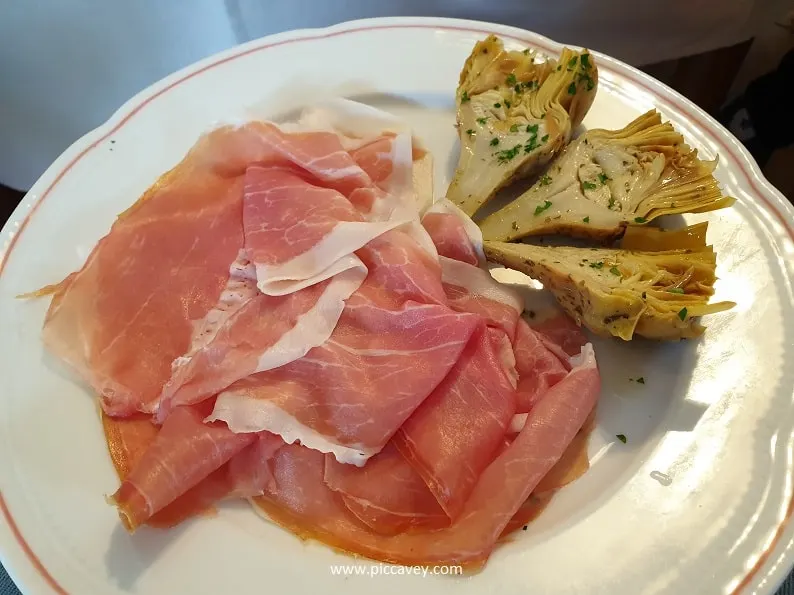
In Italy there are specific regions with protected denomination labels.
- DOP Prosciutto di Modena
- Prosciutto de San Danielle DOP
- PDO Prosciutto di Parma
- DOP Prosciutto di Carpegna
- Prosciutto Veneto Berico Euganeo DOP
- Vallée d’Aoste Jambon de Bosses
- DOP Prosciutto Toscano
- Crudo di Cuneo PDO
- PGI Prosciutto di Sauris
- IGP Prosciutto di Norcia
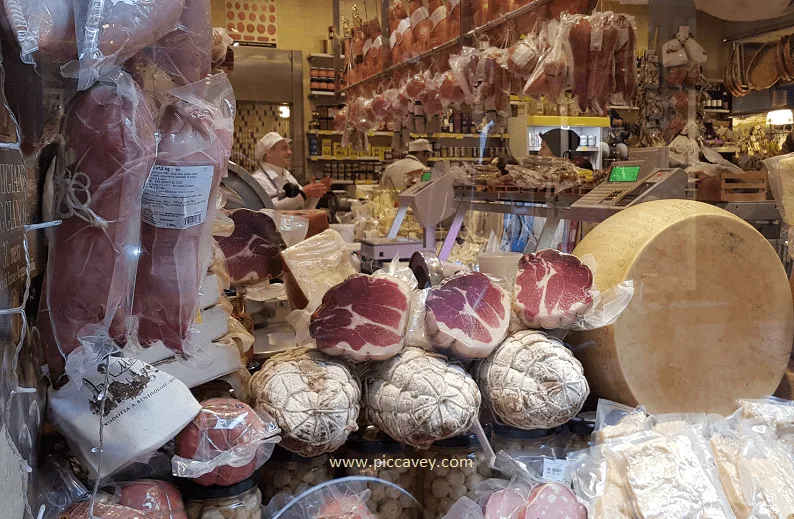
#tuttofoodworldcommunity
#tuttofood2021
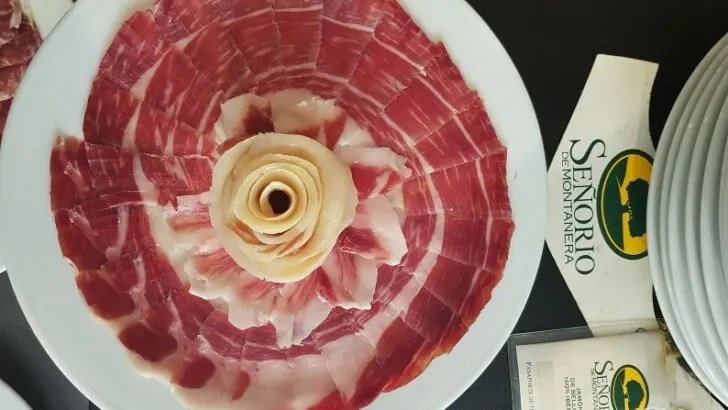
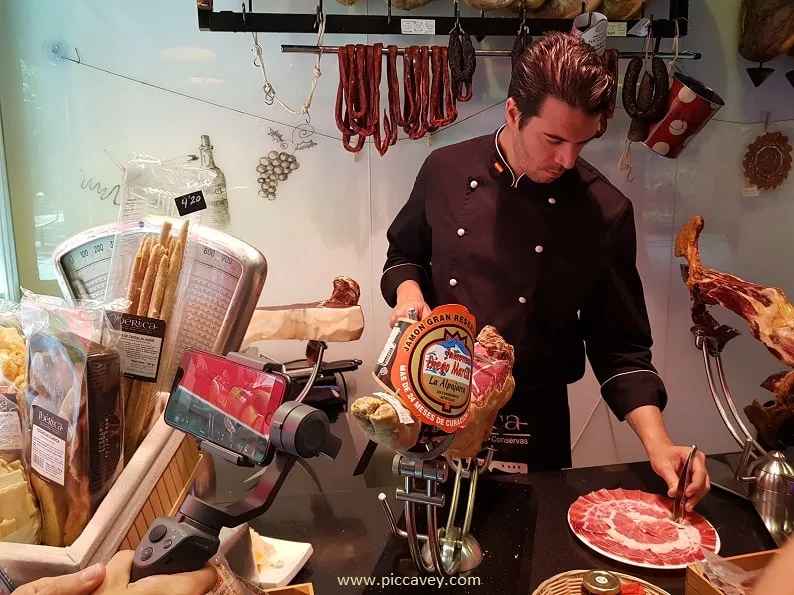




Thank you for the informative post. I have learnt a lot today after reading your article! I am going to Spain in October, so definitely will try the Iberian ham 😀
Oh, wow! That was very informative. Now I would like some Spanish ham and wine.
Great ham, and good handling of the cattle <3
que rico
@ esteban and molly.. There is one company importing jamon to Australia – Spanish Deli
They do Jamon iberico de bellota also
Any chance they are delivering jamon to australia?
Rico rico rico!!
Hi,
Currently they ship to European addresses, not to Australia just yet
Kind regards
Mollu
I love Spanish ham! Love it, love it, love it!
Great post with all the right pieces of information that anyone new to the Spanish ham totally needs…